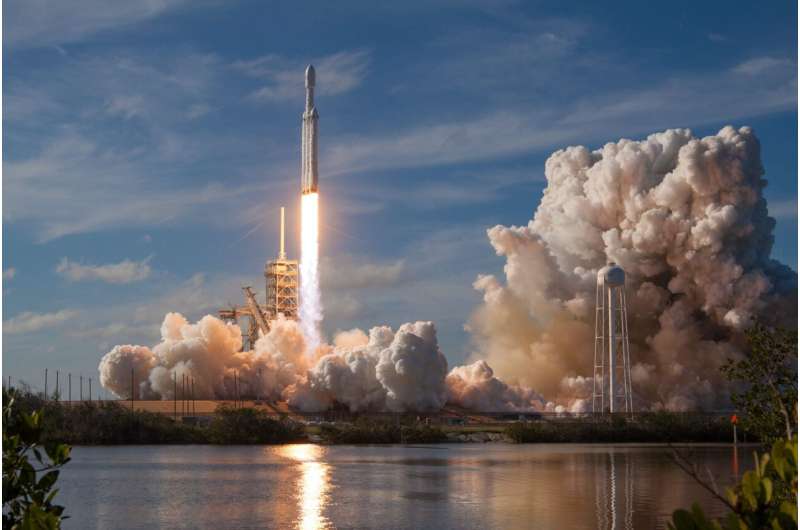This article has been reviewed according to Science X's editorial process and policies. Editors have highlighted the following attributes while ensuring the content's credibility:
fact-checked
reputable news agency
proofread
Astronauts' new rides for Artemis missions arrive at Kennedy Space Center

While the next humans to fly to the moon will rely on the Orion spacecraft for the nearly half-million-mile trip next year on the Artemis II mission, the final 9 miles to the launch pad will come while riding in one of three new astronaut transports now parked at Kennedy Space Center.
Three curvy electric vehicles officially referred to as CTVs, as in crew transportation vehicles, were built by California-based Canoo Technologies and arrived to KSC on Tuesday. They will be used during training leading up to the Artemis II flight slated for no earlier than November 2024.
That mission will fly the crew of three NASA astronauts and one Canadian Space Agency astronaut on a 10-day mission around the moon, the first time humans will fly in the Orion capsule launching atop the powerful Space Launch System rocket. It will pave the way for Artemis III no earlier than 2025 that seeks to return humans including the first woman to the lunar surface for the first time since 1972.
The new zero-emission CTVs are equipped to bring the four crew suited up in their spacesuits along with support personnel including a spacesuit technician on the ride from the Neil A. Armstrong Operations and Checkout Building out to Launch Pad 39-B.
The vehicles' look, described by NASA as pod-shaped, is modern but pays homage to the Astrovan design of the Space Shuttle Program, which was a classic converted Airstream. Canoo won the $147,855 fleet contract in April 2022. The vehicles are based on the company's all-electric LV model with an eight-person capacity.
"The collaboration between Canoo and our NASA representatives focused on the crews' safety and comfort on the way to the pad ahead of their journey to the Moon," said Artemis launch director Charlie Blackwell-Thompson in a press release. "I have no doubt everyone who sees these new vehicles will feel the same sense of pride I have for this next endeavor of crewed Artemis missions."
Apollo-era astronauts got their ride from a converted Clark Cortez motorhome, which was used from 1967 beginning with Apollo 7 up through the first several space shuttle missions.
That gave way to the shuttle-era Astrovan, which was used until that program ended in 2011.
After that, crew transportation was on hold until SpaceX launched the Demo-2 mission in its Crew Dragon spacecraft in May 2020 when Bob Behnken and Doug Hurley flew to the International Space Station. They were driven to Launch Pad 39-A in special Teslas, as has every SpaceX crewed launch since.
Boeing said its commercial crew eventually flying on the CST-100 Starliner from Cape Canaveral Space Force Station will get an updated Airstream to be called Astrovan 2.
2023 Orlando Sentinel. Distributed by Tribune Content Agency, LLC.





















